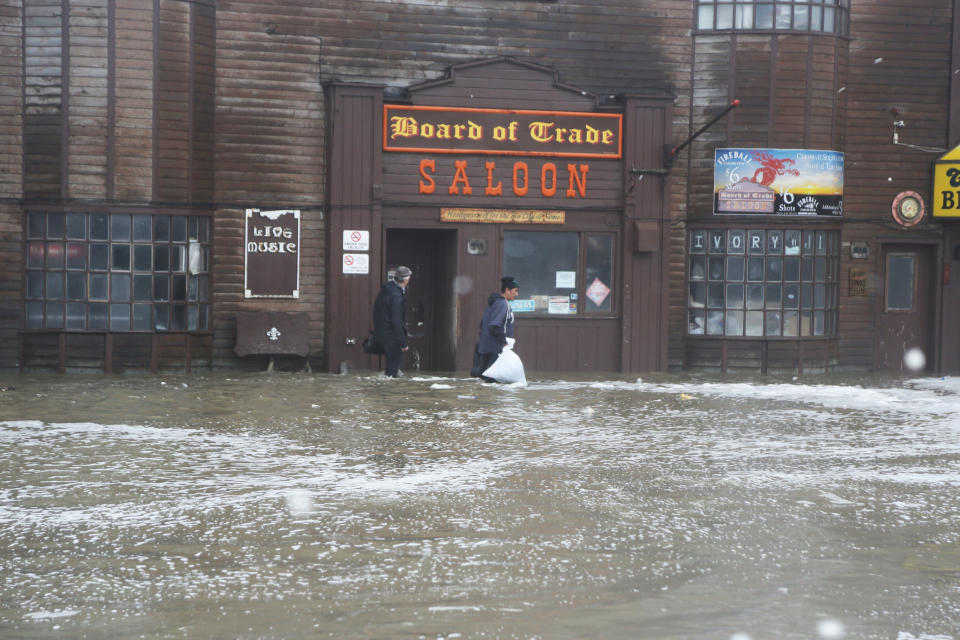Hurricane Fiona, typhoons part of wetter storms caused by climate change
Powerful storms battered three disparate, far-flung corners of the planet over the weekend, but they had one thing in common: They were made stronger and wetter by climate change.
From Hurricane Fiona barreling over Puerto Rico and the Dominican Republic to Typhoon Nanmadol pounding Japan, to the remnants of Typhoon Merbok wreaking havoc in Alaska, the past 72 hours have demonstrated the devastating effects of heavy rain and flooding.
The three weekend storms add to a trend of wetter storms in a warmer future, said Michael Wehner, a senior scientist at the Lawrence Berkeley National Laboratory.
“The worst storms will get worse,” he said.
With climate change making storms rainier and more intense, the weekend's extreme weather events offer a glimpse of what could become more common in the future, according to experts.
One of the most pronounced ways storms have been affected by climate change in recent years can be measured in rainfall increases, said Kevin Reed, an associate professor of atmospheric science at Stony Brook University in New York.
As the world's oceans heat up, they provide more energy for storms, allowing them to intensify as they form. A warmer atmosphere can also hold more moisture, Reed said.
"If you have warmer water, you'll have more evaporation, which means you have more moisture in the atmosphere, which means you can get more precipitation," he said.
Until the weekend, the Atlantic hurricane season had been unusually quiet, but Reed said mid-September is usually the peak of the season, which means other powerful storms could still be on the way.
“Hurricane Fiona is a reminder that even though it has been relatively quiet, things can change and strong storms can have a really big impact,” he added.

Scientists have estimated that for every 1 degree Celsius of temperature rise, the atmosphere can hold 7% more evaporated moisture. The planet has warmed roughly 1.1 degrees Celsius since pre-industrial times.
Hurricane Fiona, which hit Puerto Rico on Sunday and triggered an islandwide power failure, is already soaking the region with high levels of precipitation.
In an update early Monday morning, the National Hurricane Center warned of "heavy rainfall and catastrophic flooding" across much of Puerto Rico. Multiple locations on the island received more than 20 inches of rain over the past 72 hours.
A day earlier, one of the strongest storms in at least a decade hit Alaska. Remnants of Typhoon Merbok brought hurricane force winds, high seas and rain that caused widespread flooding along the coast. (Typhoons and hurricanes are both tropical cyclones but differ in their naming based on where they occur.)

And thousands of miles away, in Japan, Typhoon Nanmadol became one of the most intense storms to hit the country in years. Weather stations on the island of Kyushu recorded nearly 20 inches of rain in 24 hours on Sunday, according to weather experts at Yale Climate Connections.
More than 8 million people were asked to evacuate before the typhoon made landfall. The Japan Meteorological Agency warned Monday that heavy rains, gales, high waves and storm surges are expected to continue as the storm moves up the coast. Heavy rainfall advisories remain in effect across much of the country.
Wehner of the Lawrence Berkeley National Laboratory and Reed of Stony Brook University collaborated on a paper published in April in the journal Nature Communications that examined precipitation in the 2020 Atlantic hurricane season, which was one of the most active hurricane seasons on record. They found that climate change made the entire season wetter overall, and they measured a 10% increase in rainfall rates during the heaviest three-hour period of precipitation during storms.
"That means the storm rained 10% more because of climate change than it would have without," Reed said.
These increases in extreme precipitation can be catastrophic for the people who live in the areas hit by supercharged storms. In Puerto Rico, for instance, communities have still not fully recovered from Hurricane Maria in 2017.
"These storms are scientifically interesting for sure," Wehner said, "but the human tragedy part is far more important."
This article was originally published on NBCNews.com

